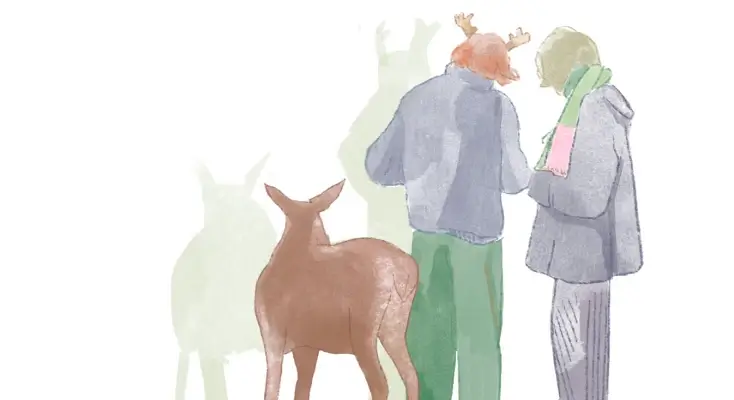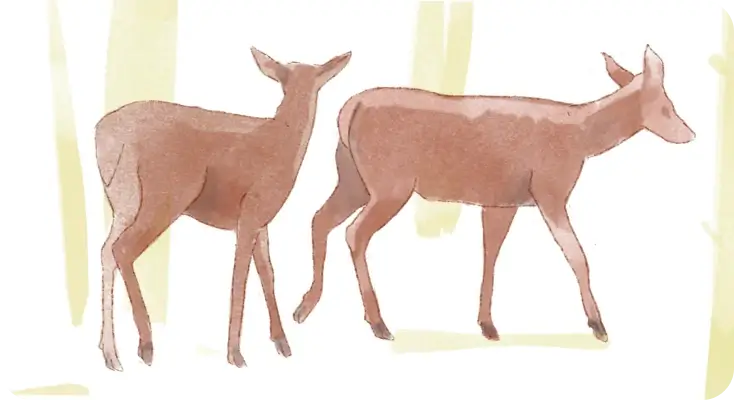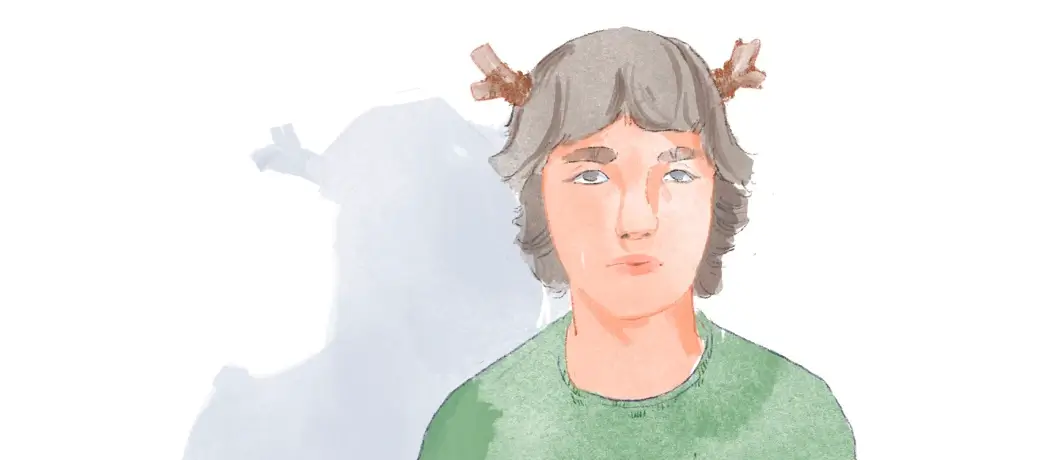Do you regularly put others’ needs before your own? You may be one of 49% of Americans who identify themselves as “people-pleasers.” They habitually put other people first, even if it means sacrificing their own comfort.
If you feel like you might be a people-pleaser, you’re certainly not alone. Perhaps you’ve wondered how this came to be, sometimes, it’s not just the way we are but a product of our life experiences.
You might be surprised to learn that people-pleasing is often part of our instinct to survive. Yes, people-pleasing can be a trauma response.
Let us take a closer look at why and when the fawning, aka fawn trauma response, became your way of getting through life.
What is the Fawn trauma response?
The fawn trauma response, sometimes also called the “friend” response, happens when we try to befriend the source of danger. We try to appease the threat to minimize the pain we’re anticipating or experiencing from them, and we may try to do this by negotiating with or comforting them.
Some psychologists prefer to separate fawn from the fight, flight, freeze, and flop responses. They choose to do this because fawning is often a learned strategy rather than an instinctual response at the moment.
However, all of these responses can happen while we’re experiencing danger. One example of fawning might be handing your wallet over to a thief. You do this not because you agree to have your wallet taken. But because your brain has rapidly weighed up the options and decided that giving up your wallet is the safest course of action.
Although you may be shaken and inconvenienced, you escape unharmed because you complied.
What trauma causes the fear response?
In theory, any type of trauma can trigger any of the five common trauma responses. However, the fawn response is thought to be more common in people who have experienced long-term relational trauma.
This means that trauma involving another person, which occurs over a sustained period of time, is more likely to result in a fawn response. Then, say, the trauma that stems from experiencing emotional abuse in childhood and later on in adulthood.
The fawn response in childhood trauma
One situation in which the fawn trauma response may arise is in narcissistic abuse—sometimes, but not always—in childhood. When a child is raised by a narcissistic parent, they might learn to rely on the fawn response to cope with manipulation, criticism, or emotional neglect. This kind of childhood trauma, and others like it, can leave a lasting impression and may contribute to scapegoat child syndrome.
When you consider the circumstances, it makes sense that your brain would learn to use the fawn response to survive emotional abuse or enmeshment relationships in the family. Appeasing the other person is an adaptive survival technique that may have successfully kept you safe at the time.
For example, doing as you were told may have stopped somebody from shouting at you. But, after repeated lessons over a long period of time, your brain learns that in order to survive, you must always do what you’re told.
As a result, you may find it difficult to say no, enforce your boundaries, or stand up for yourself—even in day-to-day life long after the danger has passed.
Some people find it difficult to remember their childhood and dissociative amnesia but may resonate with these fawn response-like experiences. Sometimes, when overloaded with negative experiences, your brain may repress memories and forget periods of time. Although you don’t remember the reason, you can retain the habits, reactive abuse and survival mechanisms formed during these times.
For more information about childhood trauma, you may wish to read our recommended books about childhood trauma. Or take the Breeze childhood trauma test.
The fawn response in adulthood
The fawn response in adulthood can become more and more obvious as time goes on. While you should be gaining independence and forming a strong sense of identity, people stuck in the response may find these things difficult.
They may feel overly reliant on others’ opinions and not be able to make up their own minds or make decisions without other people’s input. Eventually, a guilt complex will develop if they don’t fulfill others’ needs.
The fawn response in relationships
The fawn trauma response can show up in relationships the same way it does in other areas of everyday life: you may find that you put others’ needs before your own, have difficulty implementing boundaries, and compromise your beliefs and values to avoid conflict.
This can cause significant difficulty in relationships. You may begin to feel resentful of or frustrated by others around you. Other people may pick up on this, or you might start to withdraw from social interactions to avoid these feelings.
You may also find yourself at risk of others taking advantage of your agreeable nature. For example, others may begin to rely on you to complete tasks that others don’t want to do since they know you won’t say no.
Most people won’t take advantage of you on purpose, but others may not realize that they’re stepping over your boundaries when you can’t communicate who they are. You may start wondering, “I always help others, but no one helps me.”
Fawning can, therefore, become a difficult cycle. By compromising on your values and not asserting your boundaries, you may experience further neglect and end up leaning even further into the fawn response to cope.
When navigating relationships with the fear response, it’s important to maintain awareness of how you’re feeling. Understanding your relationship with yourself and others can help you manage your relationships and communicate your needs.
It may be useful to let people close to you know what you’re experiencing so that they can help you communicate how you’re feeling and understand where you’re coming from.

The fawn response and neurodivergence
Many people wonder if the fawn response is related to ADHD and autism because these conditions can also have an impact on our relationships with others.
Neurodivergence, which includes but is not limited to ADHD and autism, is an umbrella term that describes people whose brains interpret the world and respond to it in a different way than most people (“neurotypical”).
It’s important to note that “neurodivergent” is not a recognized medical term, so you may see it being used in slightly different ways, but it’s generally widely agreed that it covers ADHD and autism.
People who are neurodiverse often feel they have to hide their true selves in order to fit in with others. They may make careful observations of others and try to mimic behaviors they see, which is commonly known as “masking.”
It’s been theorized that neurodiverse people may use people-pleasing behaviors to help them be liked by others and mask their differences successfully.
This people-pleasing response can look exactly like the fawn response—and in some cases, it does.
Fawn response in trauma vs. ADHD
This kind of fawning is not necessarily a trauma response, although it can be, and you may be surprised by the crossover between trauma and ADHD.
Symptoms such as restlessness and easy distraction are shared between the two, and studies have theorized that childhood abuse may be associated with ADHD.
However, “fawning” behaviors in ADHD may simply arise from attempts to mask by compromising your boundaries and agreeing with others or difficulty recognizing when you are being taken advantage of.
This doesn’t negate the idea that such people-pleasing behaviors arise from a need to survive. Integrating with our social groups has always been vital to human survival.
Therefore, people pleasing as neurodivergent masking is still a survival instinct, even if it’s not rooted in trauma.
What does the fawn response look like in trauma?
Here’s what the fawn response might look like from day to day for someone experiencing the impact of trauma:
- Putting other people’s needs before your own, especially to the extent that your own needs are ignored. It can also be one of the symptoms of daughters of narcissistic mothers.
- Constantly apologizing, even when you haven’t done anything wrong.
- Difficulty saying “no” to other people’s requests, even when you want to.
- Trouble identifying or implementing your boundaries?
- Feeling that your own needs and wants aren’t important or aren’t as important as others.
- Changing your opinions to match those around you.
- Avoiding conflict, even in the form of small disagreements,.
- Feeling afraid to contribute your thoughts or ideas?
- Excessively seeking approval and validation from others.
- No strong sense of personal identity.
These fawn response examples are just rough illustrations. While over-apologizing can be part of a trauma response, relating to one or two things doesn’t necessarily mean you are experiencing the fawn response.
However, if you experience other signs of trauma (such as flashbacks, avoidance, and distress), think the fawn response is holding you back from healing. You may wish to explore this with a mental health professional.
When stuck in the fawn response or in “fawn mode,” you are likely to find that these feelings and behaviors are regular themes in your daily life.
They may be triggered by stressful situations or events that remind you of a traumatic experience. Alternatively, it may be difficult to spot any particular triggers.
What triggers fawning?
The fawn response could be triggered any time your brain perceives a possible threat. In ADHD or autism, this may be the threat of not fitting in. In trauma, this may be the threat of abuse.
Thus, the fear response is likely to be triggered during interactions with other people.
However, when you are experiencing the prolonged effects of trauma, you may find that the fawn response is triggered very easily. For example:
- Somebody disagrees with your opinion about a movie, so you feel anxious and change your mind.
- The tone of an email makes you feel worried that the sender is upset with you. So you reply and apologize just in case.
- When someone asks you to do something that would be inconvenient for you, you do it anyway so that they won’t get upset with you.
When the fear response is easily and frequently triggered in everyday life like this, you may start to realize that it is becoming a problem.

Why might the fawn response be unhealthy?
The fawn response can be helpful to an extent—remember, it developed as a survival strategy for a good reason. At some point, it may have kept you safe.
However, you may now find yourself stuck in the fawn response and struggling with it in daily life.
On the other hand, you may wonder, ” If people are always happy with me, and I’m super empathic and always help others, isn’t that a good thing?”
While it is beneficial to us to be liked and to help others out, for people in the fawn response, this can come at a great cost.
“Constantly ignoring your own wants and needs, even sacrificing them for the wants and needs of others, has a significant negative impact on your mental health,” says Katherine Pocock, MBPsS and MSc in Clinical Neuropsychiatry.
You may start to feel that your wants and needs don’t matter or, by extension, that you don’t matter. Your feelings of self-worth can plummet as you act against your own morals and values, and you may eventually feel completely lost.
If this resonates with you, help is available. There are several ways you can start to heal the fawn.
Remember that your body is just trying to keep you safe. While we can be grateful to it for protecting us so far, we now need to learn to manage the fawn response to move forward.
What are the 5Fs of trauma responses?
Imagine when you feel threatened; your body’s automatic survival mode kicks in. We usually don’t have control over when or how this happens, and it can lead you to react to dangerous situations in ways you might not have predicted.
You’ve likely heard of fight or flight: the idea that when faced with danger, our automatic response is either to confront it (fight) or to run away (flight).
But have you heard of the trauma responses named flop, freeze, or fawn? Flop, freeze, or fawn are also ways that your brain and body might respond to trauma. They are less known than fight or flight but just as valid. They all are 5Fs or trauma responses.
Here are our 5 Fs: fight, flight, flop, freeze, and fawn in detail.
The Flop Response
The flop response happens when our bodies go completely loose in response to a threat. It can look like a total loss of muscle tension, and we sometimes experience dissociation at the same time.
When we “flop” in response to danger, our bodies become loose to reduce the experience of physical pain.
The Freeze Response
The freeze response, on the other hand, causes our muscles to become rigid and still. In the freeze response, we react like deer in headlights.
This survival mechanism evolved to deter prey by “playing dead” or minimizing the chance of detection. Again, we may experience dissociation at the same time as the freeze response.
The Fawn Response
Therapist Pete Walker coined the term “fawn response” to describe a particular response to a threat. This response is characterized by putting others’ needs ahead of one’s own.
Because the fawn response is an attempt to appease the potential threat, it’s often likened to “people-pleasing” behavior, which can also be a symptom of the mother wound.
Flight vs. Fight vs. Flow Vs. Flawn Trauma Responses
Sometimes, the body continues to sound the alarm for danger long after the risk has passed. When this happens, you may be experiencing the effects of prolonged trauma, PTSD, or C-PTSD.
In these states, you may continue to experience any of the 5 “F” responses during your day-to-day life.
The table below briefly explains the differences between the fight, flight, flop, freeze, and fawn responses and how they can show up in prolonged reactions to trauma.
| Fawn | Fight | Flight | Flop | Freeze | |
| Feelings & behaviors | Being overly generous, over-apologizing, and pleasing others | Feeling angry, wanting to hurt others or the self | Feeling restless, wanting to escape, avoiding the danger | Loss of muscle tension, possible fainting, and likely dissociation | Appease or alleviate the threat to minimize the danger |
| Survival mechanism | Appease or alleviate the threat to minimize danger | Overpower the threat | Run away from the threat | Minimize pain by becoming loose | Avoid being detected by the threat, and minimize pain by limiting movement |
Anybody can experience any of these 5 “F” responses; it depends heavily on the situation. Your brain will choose the option it believes is most likely to keep you safe or minimize pain.
However, some people find that one resonates more than others. They may call this their “dominant response.”
For example, suppose somebody resonates more with the fawn response than others. In that case, they may feel they have a dominant fawn response, but they will likely still experience aspects of other trauma responses.
Now that we have a basic understanding of trauma responses in general let’s dive deeper into “fawn.”
How to heal the fawn response
Working on healing the fawn response may involve developing your sense of self, understanding your boundaries, and practicing saying “no” or disagreeing with others—what you will need to focus on most depends on what the fawn response looks like for you.
If you are experiencing the fawn response as a result of trauma, PTSD, or C-PTSD, you may also wish to engage in trauma therapy.
This could involve trauma stabilization, processing, and recovery techniques. A mental health professional can help you decide what’s best for you and how to move forward.
However, there are steps you can take to support the recovery process at home.
The Breeze app contains guidance and tools to help you ground, relax, and connect with yourself, including:
- Mood tracking helps you understand your triggers and patterns.
- Mindfulness activities help you take a step back, refocus, and breathe.
- Self-growth courses based on CBT principles will help you understand your experiences and learn the first steps to recovery.
The effects of trauma and the fawn response can make you feel lots of complex emotions.
It’s important to practice self-compassion and understand that your body relies on its built-in evolutionary mechanisms to keep you safe.
The fawn response is a very common experience for those who have experienced trauma. You are not alone in feeling how you’re feeling, and support is available.
Disclaimer
This article is for general informative and self-discovery purposes only. It should not replace expert guidance from professionals.
Any action you take in response to the information in this article, whether directly or indirectly, is solely your responsibility and is done at your own risk. Breeze content team and its mental health experts disclaim any liability, loss, or risk, personal, professional, or otherwise, which may result from the use and/or application of any content.
Always consult your doctor or other certified health practitioner with any medical questions or concerns
Breeze articles exclusively cite trusted sources, such as academic research institutions and medical associations, including research and studies from PubMed, ResearchGate, or similar databases. Examine our subject-matter editors and editorial process to see how we verify facts and maintain the accuracy, reliability, and trustworthiness of our material.
Was this article helpful?






